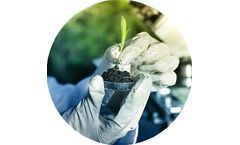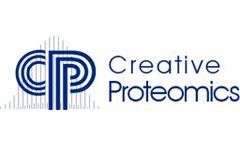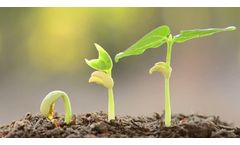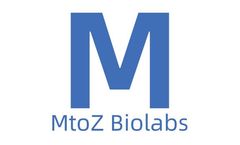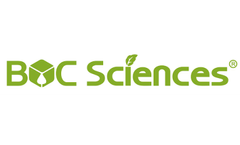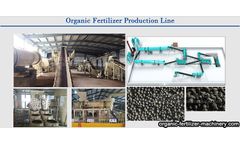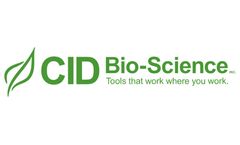Refine by
Growth Regulator Articles & Analysis
30 articles found
Pheromone Based on Functional Groups Pheromone Based on Carbon Number (Main Chain) Pheromone Plant Growth Regulators The chemical compositions of the identified insect pheromones were compound and derivative elements (alkanes, alcohols, aldehydes, ketones, esters, anhydrides, terpenes, amines, epoxides, nitriles, etc), which operate individually or in a limited ...
The market is segmented into fertilizers, pesticides, adjuvants, and plant growth regulators, with key applications in crop-based and non-crop-based sectors. ...
Plant hormones, also known as phytohormones, are trace organic compounds synthesized within plants that play a crucial role in regulating various aspects of growth and development. These hormones are produced in specific tissues and can be transported to different parts of the plant, where they exert their effects at remarkably low concentrations. ...
Plant growth regulators (PGR) are a class of small molecule compounds with plant hormone activity that can affect plant growth and development. Such compounds are often used to enhance plant resistance, promote plant cell division and growth, increase yield, and improve quality. There are many types of growth ...
SUMO modification in plants is an important process of protein post-modification, playing a key role in regulating plant growth and development and responding to environmental stress. ...
Dr. Zobayed has over 25 years of expertise in the tissue culture industry and he's the mastermind behind Segra Internationals plantlet production efforts in Canada. Today he'll be going through the overall process of tissue culture initiation, multiplication and acclimation of tissue culture cannabis plantlets. He'll also review the various methods of tissue culture production including explant ...
Cytokinins are a class of natural plant growth regulators that play a crucial role in the regulation of cell division, cell differentiation, and organ development in plants. ...
Plant growth regulators are inspired by a class of plant metabolites called plant hormones. ...
Cytokinins are a class of natural plant growth regulators that play a crucial role in the regulation of cell division, cell differentiation, and organ development in plants. ...
Introduction of Auxins Auxins are a class of plant growth regulators. They are hormones that stimulate or inhibit the growth and development of plants. ...
Specific insecticides include the following five categories: attractants, repellants, antifeedants, sterile agents, and insect growth regulators. Attractants attract pests by sex or bait. Repellents keep pests away from where the drug is. ...
In India, thousands of tonnes of crop gets destroyed every year due to improper use of insecticides, pesticides, plant growth regulators etc. This destruction of crop can happen either if a farmer uses these chemicals without any scientific knowledge by themselves or by relying on their local shops. ...
One of the most widely used chemicals for speeding up the ripening process is ethylene, so much so that it is known as ‘the ripening hormone’.4 Ethylene is naturally produced by ripening fruits where it can trigger biochemical cascades and physiological responses such as the aging and shedding of petals or additional growth in some cells. Some fruits, such as bananas, ...
The organic fertilizer produced by organic fertilizer manufacturing process contains plant growth regulating substances, organic matter and various nutrients necessary for growth, which can promote crop growth, and the effect of organic fertilizer is more obvious in the later stage of crop growth. ...
The plants were placed in a glass-glazed greenhouse under a natural day length with a day/night air temperature set point of 75/60 ºF. The plant growth regulator paclobutrazol was applied weekly as a substrate drench at a rate of 1 to 2 ppm. ...
According to a review by Dr. Crocombe, hand-held spectrometers have historically been used by only small groups of people, such as analytical and drug companies. These days, spectroscopy is available in simple low cost devices for a multitude of applications for scientists and non-scientists alike. One of the most prominent uses of spectroscopy has been the use of the technology on leaves for ...
Poinsettias, the classic Christmas pot plant, are grown in their thousands in UK nurseries from late July onwards, but growers have to rely on the use of plant growth regulators (PRGs) to ensure that the optimum height and number of bracts is achieved by early December. With protective environmental legislation threatening to reduce the availability and use of ...
Even the application of the plant growth regulator 1-Metylcyclorpopene (1-MCP) has been proven to be more effective when combined with the ethylene removal (Bertolini, 2014) In a coldstore, the fruit is releases ethylene steadily. ...
Azadirachtin produced deformed pupae and adults due to its insect growth regulator properties, but spinosad was more harmful and produced greater number of deformed individuals. ...
Lemna spp. are the standard test species representing aquatic macrophytes in the current risk assessment schemes for herbicides and plant growth regulators in the European Union and North America. At a Society of Environmental Toxicology and Chemistry (SETAC) workshop on Aquatic Macrophyte Risk Assessment for Pesticides (AMRAP), a Species Sensitivity ...


